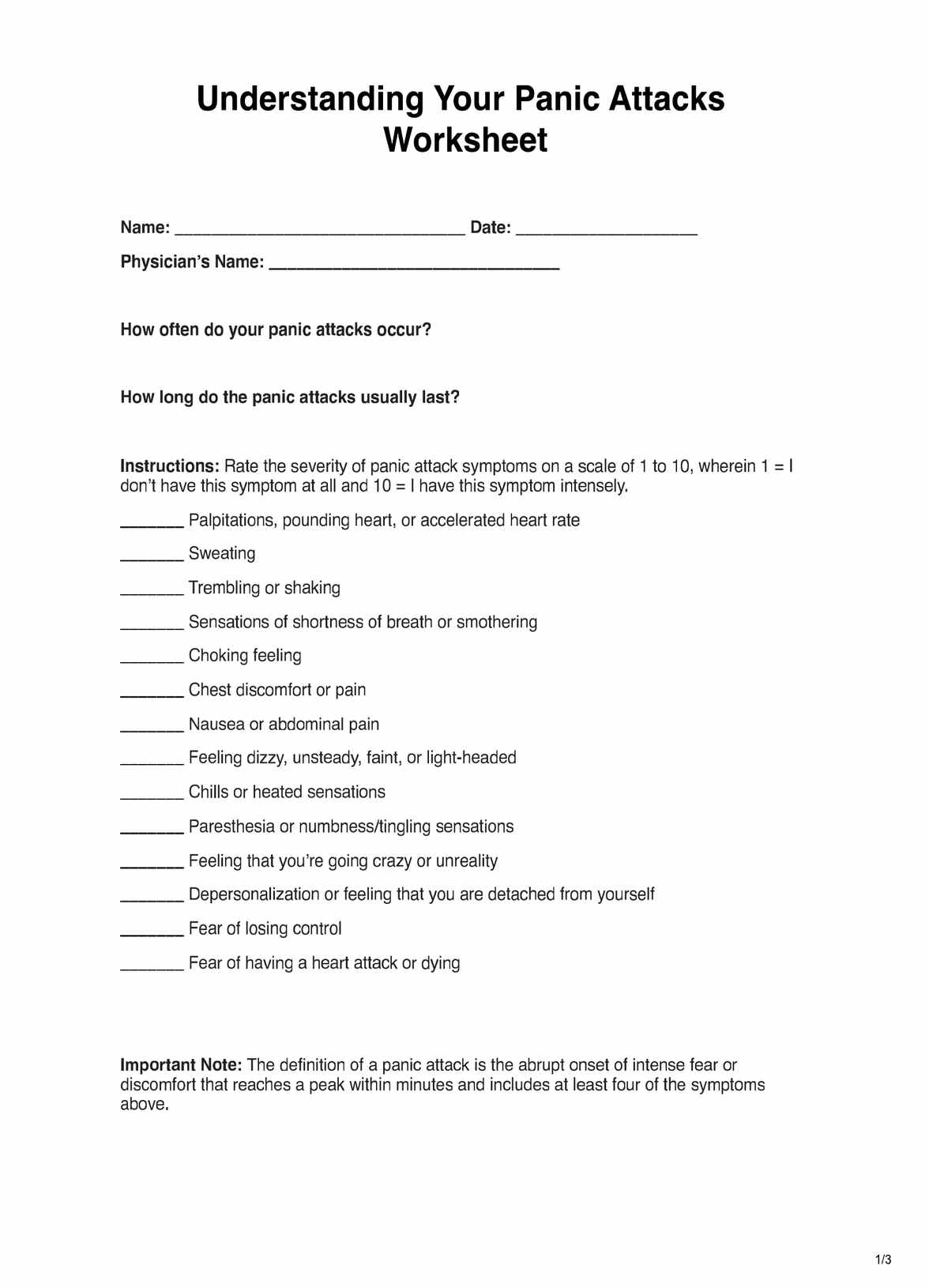It can take at least 30 minutes for a client to complete the Understanding Your Panic Attacks Worksheet, depending on the comfort and the patient’s self-awareness of their panic attack symptoms.

Understanding Your Panic Attacks Worksheet
Give your client an Understanding Your Panic Attacks Worksheet to help them identify, assess the severity, and see the impact of their panic attack symptoms.
Use Template
Understanding Your Panic Attacks Worksheet Template
Commonly asked questions
The Understanding Your Panic Attacks Worksheet can help people identify their panic attack symptoms and severity.
The Understanding Your Panic Attacks Worksheet is best used during the assessment period, tracking one’s progress or assessing the effectiveness of a treatment.
EHR and practice management software
Get started for free
*No credit card required
Free
$0/usd
Unlimited clients
Telehealth
1GB of storage
Client portal text
Automated billing and online payments











